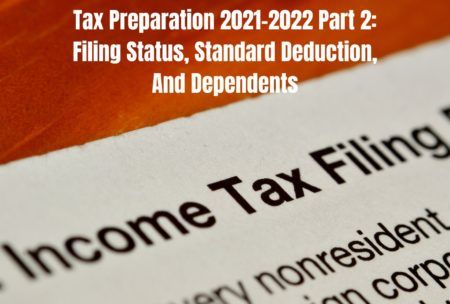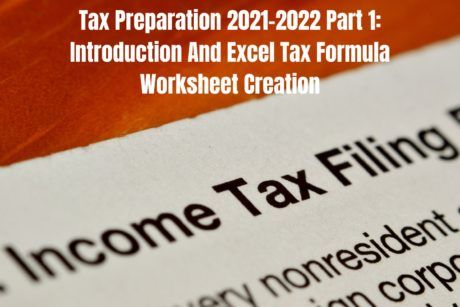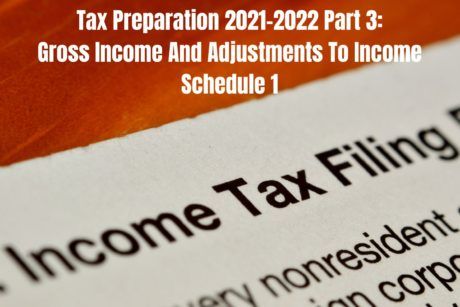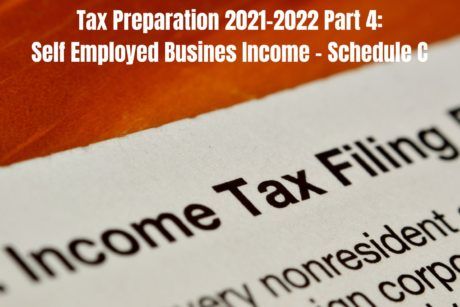Learn about filing status, deductions, and dependents in tax preparation. Read more.
Robert (Bob) Steele CPA, CGMA, M.S. Tax, CPI
Access all courses in our library for only $9/month with All Access Pass
Get Started with All Access PassBuy Only This CourseAbout This Course
Who this course is for:
- Tax payers
- Accountants
- Business owners
What you’ll learn:
- Select the proper filing status
- Understand the concept of dependents
- Understand various tax deductions
Requirements:
- No prior knowledge is required to take this course
This course will focus on filing status, standard deduction, and dependents.
We will look at each component from multiple angles, starting with a presentation discussing the topic and then looking at examples to better understand the concepts in action.
The example section will use tax forms to work problems and an accounting equation method using Excel so learners will understand the impact on the actual tax return and visualize the concepts using a tax formula.
Selecting the proper filing status is a critical component of tax preparation and will impact other tax return areas, including the standard deduction amount and tax brackets. Once we understand the filings status rules, selecting the appropriate filing status is usually straightforward, but there are circumstances where it can be more complex.
The standard deduction amount will be dependent, in part, on filing status. It is helpful to understand the standard deduction so we can also understand the interplay between the standard deduction and the itemized deduction. Examples showing different standard deduction amounts for different filing statuses and the relationship between the standard deduction and the itemized deduction will help.
The number of dependents may impact filing status and can result in possible credits. Once we understand the concept of dependents, it is usually easy to determine if somebody is a dependent. However, there are cases where it can be more confusing. Example problems will help us understand dependents and how they impact the tax return.
Our Promise to You
By the end of this course, you will have learned tax preparation in terms of filing status, deductions, and dependents.
10 Day Money Back Guarantee. If you are unsatisfied for any reason, simply contact us and we’ll give you a full refund. No questions asked.
Get started today!
Course Curriculum
| Section 1 - Filing Status | |||
| Filing Status Part 1 | 00:00:00 | ||
| Filing Status Part 2 | 00:00:00 | ||
| Filing Status Part 3 | 00:00:00 | ||
| Filing Status Tax Software | 00:00:00 | ||
| Section 2 - Standard Deduction | |||
| Standard Deduction New | 00:00:00 | ||
| Standard Deduction | 00:00:00 | ||
| Section 3 - Dependents | |||
| Who Qualifies As Your Dependent Part 1 | 00:00:00 | ||
| Who Qualifies As Your Dependent Part 2 | 00:00:00 | ||
| Who Qualifies As Your Dependent Part 3 - Questionnaire | 00:00:00 | ||
| Who Qualifies As Your Dependent - Summary | 00:00:00 | ||
About This Course
Who this course is for:
- Tax payers
- Accountants
- Business owners
What you’ll learn:
- Select the proper filing status
- Understand the concept of dependents
- Understand various tax deductions
Requirements:
- No prior knowledge is required to take this course
This course will focus on filing status, standard deduction, and dependents.
We will look at each component from multiple angles, starting with a presentation discussing the topic and then looking at examples to better understand the concepts in action.
The example section will use tax forms to work problems and an accounting equation method using Excel so learners will understand the impact on the actual tax return and visualize the concepts using a tax formula.
Selecting the proper filing status is a critical component of tax preparation and will impact other tax return areas, including the standard deduction amount and tax brackets. Once we understand the filings status rules, selecting the appropriate filing status is usually straightforward, but there are circumstances where it can be more complex.
The standard deduction amount will be dependent, in part, on filing status. It is helpful to understand the standard deduction so we can also understand the interplay between the standard deduction and the itemized deduction. Examples showing different standard deduction amounts for different filing statuses and the relationship between the standard deduction and the itemized deduction will help.
The number of dependents may impact filing status and can result in possible credits. Once we understand the concept of dependents, it is usually easy to determine if somebody is a dependent. However, there are cases where it can be more confusing. Example problems will help us understand dependents and how they impact the tax return.
Our Promise to You
By the end of this course, you will have learned tax preparation in terms of filing status, deductions, and dependents.
10 Day Money Back Guarantee. If you are unsatisfied for any reason, simply contact us and we’ll give you a full refund. No questions asked.
Get started today!
Course Curriculum
| Section 1 - Filing Status | |||
| Filing Status Part 1 | 00:00:00 | ||
| Filing Status Part 2 | 00:00:00 | ||
| Filing Status Part 3 | 00:00:00 | ||
| Filing Status Tax Software | 00:00:00 | ||
| Section 2 - Standard Deduction | |||
| Standard Deduction New | 00:00:00 | ||
| Standard Deduction | 00:00:00 | ||
| Section 3 - Dependents | |||
| Who Qualifies As Your Dependent Part 1 | 00:00:00 | ||
| Who Qualifies As Your Dependent Part 2 | 00:00:00 | ||
| Who Qualifies As Your Dependent Part 3 - Questionnaire | 00:00:00 | ||
| Who Qualifies As Your Dependent - Summary | 00:00:00 | ||




